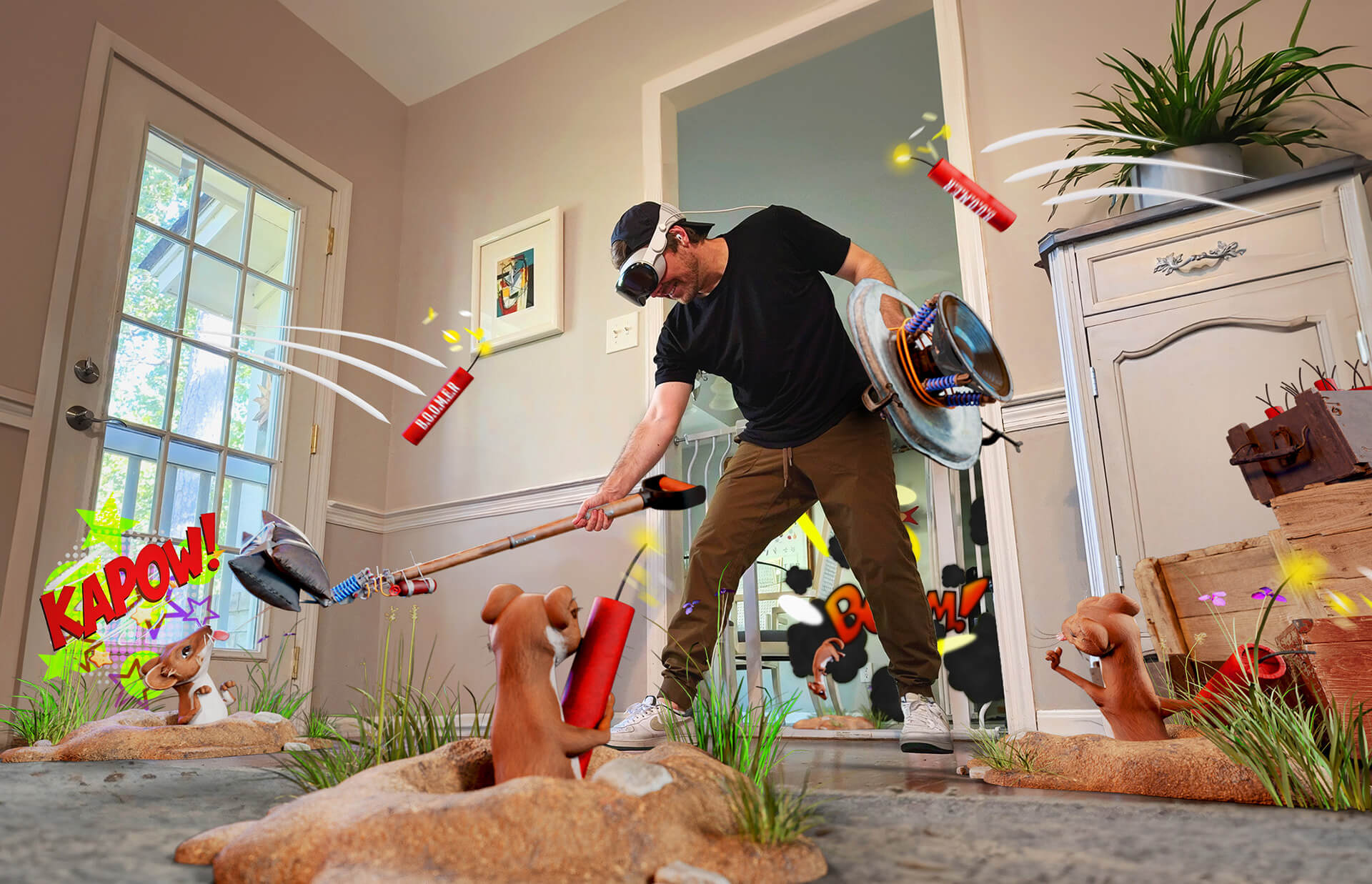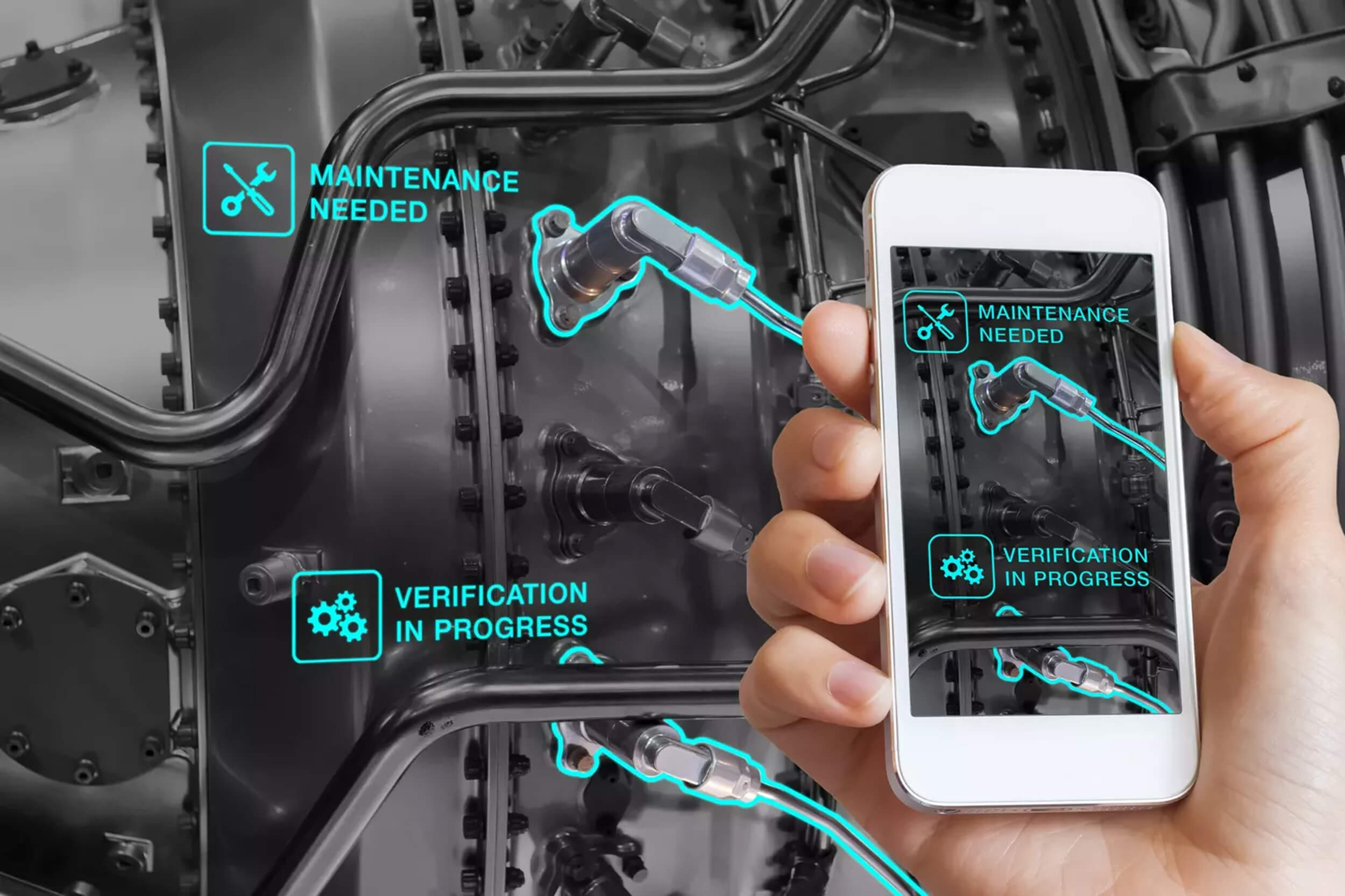AR is fast becoming the new interface between humans and machines, bridging the digital and physical worlds and touted as the most exciting new technology of our time. It is reshaping our world by transforming how we learn, make decisions, and interact with the physical world. It is changing the way businesses serve customers, train employees, design and create products, and manage their value chains. This disruption is significantly impacting companies around the world and ultimately, defining how they compete.
Augmented reality is capable of so much more than just consumer-facing experiences such as filters and games. Enterprise AR is a lesser-known, but, equally powerful application of the technology with the potential to revolutionize how businesses operate — from breaking down complex medical concepts into interactive 3D forms to construction companies showing clients 3D models of the project they’re bidding on.
Enterprise adoption of AR technology has been growing in the shadow of its consumer-focused counterpart with a respectable compound annual growth rate (CAGR) of 66%. This rate is set to continue growing as AR has shown early value in industries such as logistics, field service, and training.
Let’s chat
Not sure where to start? Book a free strategy call with us to get started! No strings attached.

Disrupting Field Services with Augmented Reality
Enterprise augmented reality is the next big tool to boost efficiency and improve the output of field service providers. AR’s ability to use mobile devices to relay visual information to a user will transform the industry by enabling remote maintenance and repair functions.
As such, AR adoption rates for field service providers is expected to surge, with over 50% of enterprises expected to use the technology by 2025.
Appointment-Centric Field Service Providers
These types of field service providers focus on providing customers with on-site services. Appointment-centric providers handle heavy logistical challenges as they often coordinate with a large number of technicians to meet customer needs. Enterprise AR helps manage staff schedules effectively by streamlining scheduling tasks, ensuring you get the right field service person to the right place at the right time. It also offers notification options for all jobs that are running, so you can be notified of any issues via email, text, and voice call.
It enables remote troubleshooting. For example, AR enables service providers to remotely see and diagnose a problem prior to dispatch. This results in a higher first-time-fix rate and shorter service time. Enterprise AR can further aid field service technicians by allowing them to consult with a remote expert. This means that technicians can service a wider range of issues without necessarily being very knowledgeable on the subject matter. Finally, AR can provide a link between a customer and a remote technician, allowing the former to be guided through resolving simple issues.
Keep up to date
Sign up to our newsletter for exclusive updates and content, delivered directly to your inbox.
Outcome-Centric Field Service Providers
These types of field service providers are typically responsible for maintaining complex equipment such as in the medical and utility industries. Their work focuses on ensuring optimal equipment performance. As such, they take proactive measures to reduce equipment downtimes, inefficiencies, and outages.
Augmented reality technology enables these field service providers to remotely examine equipment. This remote role eliminates the need for many on-site visits, saving costs and time. Using AR during routine on-site maintenance can also automatically check the status of the equipment. This helps ensure that the equipment is functioning properly while provisioning for anticipated future problems.

Augmented reality can assist field service technicians by identifying equipment parts that needs repair.
Improving Logistics Through AR
Enterprise augmented reality is the driver of the next big step forward for the logistics industry. Logistics providers can use the information garnered from AR to optimize planning and task delivery, resulting in greater efficiency and better customer service.
The biggest beneficiaries of AR technology in logistics will be the warehousing and transportation sectors.
Warehouse Operations
Order picking –the process of drawing items from a warehouse inventory to fulfill orders, and considered the most labor-intensive and expensive activity in the supply chain – accounts for around 55% to 65% of the total cost of warehousing operations. Enterprise AR technology can significantly save on these costs by reducing picking errors and search time.
Mobile AR systems such as a head-mounted display (HMD) can decrease picking errors by as much as 40%. An HMD can guide workers to the right locations where they can see a digital picking list embedded in their field of vision. The picking process is further enhanced with real-time object recognition, barcode reading, and a useful information feed.
Enterprise augmented reality can also improve warehouse-planning processes. The technology can visualize planned rearrangements and model new workflows in full scale.
Transportation Optimization
Augmented reality technology can optimize workflows and logistics in the transportation industry. In the freight loading space, the technology replaces cumbersome printed cargo lists and load instructions with an AR display that checks inventory while highlighting suitable vehicle areas to load in.
Global Trade is often a complicated task for logistics providers. Enterprise AR alleviates some of the headaches by assisting in import and export compliance, documentary completion, and real-time translation of foreign labels and trade items.
Augmented reality enables faster and more accurate completeness checks. It can automatically scan items to detect any damage or faults while enabling collectors to instantly determine if a load is complete.
AR can provide dynamic traffic support to delivery personnel. An integrated AR navigation display provides real-time traffic data to optimize routes on the go, improve driving safety, and minimize driver distraction.
Better Training with AR Technology
Enterprise augmented reality technology is set to revolutionize the training industry. From corporate training to hands-on learning in sectors like manufacturing and healthcare, applications of this technology include:
- a standalone tool in an interactive style of learning
- a teaching aid, as a supplement to training materials
- covering an entire module in a training program
- incorporating it into an entire courseware offering
Prevents Workplace Harassment and Discrimination
Augmented reality can simulate realistic anti-harassment training and gender interaction simulations. This creates awareness around appropriate workplace interactions while facilitating immediate feedback.
Facilitates Engaging and Interactive Learning
Enterprise AR integrates well with Learning Experience Platforms (LXP). These technologies build on traditional learning systems by curating engaging and interactive educational content for each user. Trainees can learn faster by using immersive AR technology-driven recommendations. The result? A “Netflix-like” experience where content is appropriately targeted.
Overcomes Learning Barriers
Hands-on skills – such as surgery, equipment assembly and maintenance, and machine operation are time-consuming and require extensive cognitive effort. This is because there is an inherently steep learning curve when it comes to translating 2D materials into real-life 3D skills. Enterprise AR bridges this gap by translating 2D objects into a real-life environment taking care of these mentally taxing tasks.
Enterprise Augmented Reality Is the Future
Augmented reality technology promises far more utility than just face filters. Industries such as logistics, training, and field service providers are poised to take advantage of this technology described by Apple CEO Tim Cook “as a big idea, like the smartphone.”
“The smartphone is for everyone, we don’t have to think the iPhone is about a certain demographic, or country or vertical market: it’s for everyone. I think AR is that big, it’s huge. I get excited because of the things that could be done that could improve a lot of lives. And be entertaining.”
Rock Paper Reality (RPR) stands at the forefront of enterprise AR technology. A market leader in the AR industry for over a decade, RPR works with partners through the entire development process, from strategy right through to deployment and impact analysis thereafter.
When it comes to AR development, Rock Paper Reality is your one-stop-shop. From 3D content creation to interactive Augmented Reality apps to WebAR Experiences, we develop unparalleled experiences for enterprises and consumers alike. Schedule an RPR demo today and discover how we leverage 12 years of innovative and successful AR to empower businesses – from development and content creation to consultation and targeted marketing solutions.
